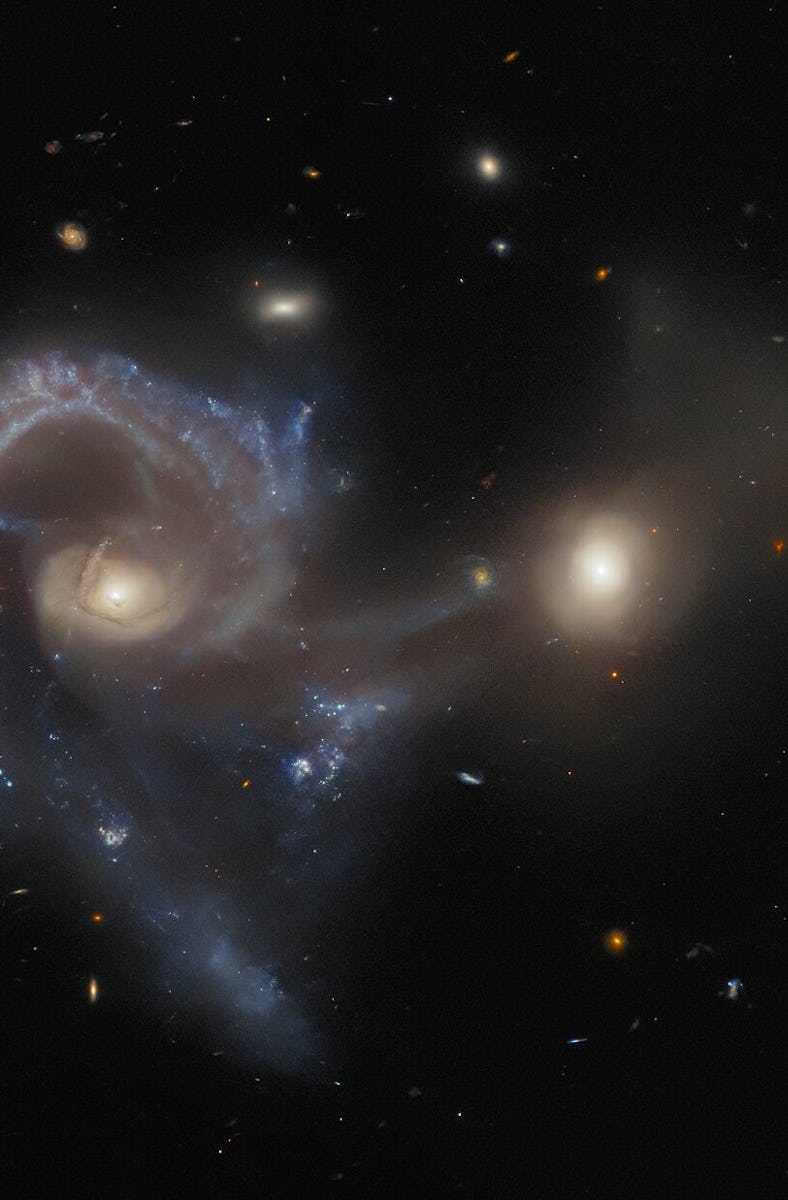The Hubble Telescope Just Captured Two Galaxies Colliding Into Each Other
The venerable space telescope is seeking out the weirdest, messiest galaxies in the universe.

This slow-motion trainwreck of a galaxy merger is weird, messy, and dramatic — and we just can’t look away.
465 million light-years away, two galaxies are colliding. Immense tidal forces have distorted both galaxies, leaving the larger one noticeably off-kilter. The Hubble Space Telescope recently snapped this candid image of galaxy pair Arp 107 during its survey of the universe’s most oddball galaxies.
Galaxies Trapped in a Messy Relationship
Arp 107 is the name astronomers gave to a pair of galaxies in the process of becoming one giant galaxy, but that can get messy. As the two galaxies spiral inward toward each other, their immense tidal forces have stretched the larger galaxy’s bulk into one long, lopsided spiral arm. Meanwhile, bright streamers of gas and dust span the space between the two galaxies, caught in the middle of a gravitational tug-of-war between the pair (surely not the healthiest way to stay connected, Arp 107).
These two galaxies will eventually merge into one larger galaxy, but they’re in a difficult place right now.
Those distortions are what earn the Arp 107 pair its place in the Arp Atlas of Peculiar Galaxies, a compendium of the 338 weirdest, wildest, wonkiest galaxies in the known universe. The Arp Atlas includes lopsided one-armed spirals, the larger half of Arp 107, galaxies with long, twisting arms like ESO 415-19, and even some ring-shaped galaxies whose previous cosmic dance partners have ripped their hearts out. All of them got their weird shapes in galactic collisions, near-misses, or messy astronomical breakups.
Astronomer Halton Arp published his catalog in 1966 with the hope that studying these “peculiar” galaxies would help astronomers understand the often violent events and processes that shape galaxies as they evolve. And for nearly a year, in between its other observations, the Hubble Space Telescope has been imaging galaxies from the Atlas of Peculiar Galaxies.
Arp 107 is especially interesting because its larger partner is a special type of very bright galaxy called a Seyfert galaxy. Both Seyfert galaxies and quasars have supermassive black holes actively gobbling up material (including, sometimes, whole stars) at their centers. But quasars’ brightly blazing hearts are much brighter than the rest of the galaxy, so astronomers can usually only see the light of the feasting supermassive black hole. Seyfert galaxies, on the other hand, glow brightly in their own right, so astronomers can see and study the whole galaxy.
And in this case, they’re getting quite a show.
This article was originally published on